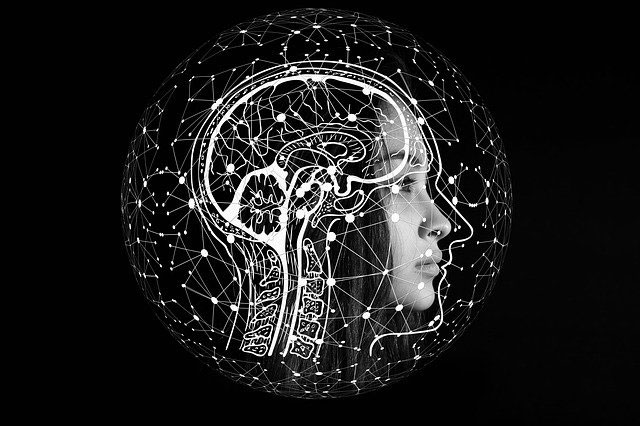
The Thought-Process
To perceive a visible-object through the eye, to apprehend a sound through the ear, to perceive an ordure through the nose, to perceive a taste through the tongue, to apprehend a touch through the body, to speak words through the mouth, to understand the words of others, and the meanings of their words, to raise the bodily parts or limbs, to lower down the bodily parts, to move the bodily parts back ant forth, to go back and forth give something or take something and so on are not performed by one single thought.
For each of these functions and movements to be performed, there should be a series of thoughts present in order. Those series of thoughts which perform (the flow of thoughts) this each of acts are called the thought-processes.
In brief, the series of thoughts arising with regard to each movement should be reckoned as thought process.
The mind is so subtle. It is invisible with eye. It cannot be seen with the eye. Though the wind, cold, hot is not seen to the eye it can be felt through the body. It is an untouchable object. It is very difficult to investigate and examine the mind because the instrument by which the mind should be understood is mind itself. The mind is so quick. It arises and passes away at very fast. Therefore it is very hard to perceive the true aspect of the mind. The mind being the instrument, which understands the mind, it is too hard to apprehend. With a knife something can be cut off, but the knife itself cannot be cut off by itself. Likewise the mind being an instrument which can understand the mind, it is so hard to apprehend. Therefore for the people who haven’t learnt about the mind cannot think whether there is a thought-process either. It is also difficult for those who are going to learn about the mind just like something is apparently seen to the eyes. They can understand it with an inferential knowledge. Though with an inferential knowledge it is important to understand about the mind. Therefore just try to understand the mind.
First of all, the person who is going to study the thought-processes must learn the life span of the mind and the matter. There are three different stages of the mind and the matter as arising stage, developing stage and ceasing stage. Those stages are very very short. Therefore it is very difficult to show a time as well. A word called khana is used to denote that very short time. (Minor instant). The minor instant of arising stage, the minor instant of developing stage and the minor instant of perishing stage. There is no inequality of these three stages. The time of the function of these three stages is equal. The time of duration is very short. Billions of mind moment can elapse, in the time that it takes for the eyes to blink. It may take a longer time for you to understand.
The lifetime, (life span) of a material phenomenon is for seventeen mind-moments. On the other hand, it runs for fifty-nine sub thought-moments (minor instance). In the first sub mind –moment a material-phenomena is born.(emerge, arise, spring up, come out, issue) it is developed and in function for fifty-nine sub thought-moment and in the fifty one thought moment it passes away.
Specially keep these in mind please.
The time of these three stages of a mental phenomenon is equal. No any discrimination to find. But in the case of material phenomena, the time of both arising and passing away is equal while the time of presence runs for fifty-nine sub mind- moments. (Minor instants)
When you see the substance persisting over many months and man years, sometimes, it may be bit difficult for you to belief whether there are seventeen mind moment for material-phenomena to play or that is the life time of a material –phenomena. In that case, we can have a brief definition of material phenomena. (Clarification, elucidation, description, interpretation)
Elucidation of matter.
A heap of sands may be seen to us as one particular object or as a gross substance (massive, coarse) wen we see it from far distance. But it is not a single substance, though we see it so. It is a huge collection of sands. A congregation of sands. Or a mass of sands. Each substance, which we see as one object, is a mass of small particles. A mustard seed is also a collection of small particles. It is made up of small tiny substances.
Every object, which sees, has been made up of units of matter. Unit of matter is the intrinsic, very fundamental point of every object and substance in the world. It is not a long lasting object or thing. Its lifetime is for seventeen mind moments. Billions of mind moments can elapse in the time of the eye link. That much of short duration is sufficient for thousands and thousands of units of matters to arise and perish in sequence or in due order.
Billions of nits of matter can be found in a mustard seed or that size of object. Mustard seed is not a single object or single substance. It must be realized as a collection of billions of units of matters. It is a congregation of billions of matters. Even though each unit of matter of an object that we experience perishes after seventeen thought-moments it is not apparent to us because of two reasons. A differentiation is not seen because of two reasons. That is to say:
1. All the units of matter on a substance never perished at a same time.
2. New units of matter are arisen immidiately after the former matters have passed.
In a mustard seed- size tiny substance, there are units of matters, which have passed through for one-mind- moments. Also there units of matters which have passed through for two thought moments which have passed through three four five mind moments. Also there are units of matters which have reached their fiftieth stage, which is the last mind –moment of presence. There may be billions of units of matters, which are going to elapse or to end of their function. Each unit of matter is ceased and perished at its fifty first mind moment while some of units of matters are perished while the others are still in the process of actions, passing their mind moments in sequence.
Some units of matters are perished ending their lifetime and the function. But we cannot see any difference of the object because the other billions of units of matters are on the process of actions.
This reason must be well understood.
All the units of matters of an object are not focussed to our mind. The mind-processes don’t arise focussed on each of different levels of units of matters. Thought processes arise on units of matters which are on the same stage or in equal stage. Different units, which have passed through their different stages and levels, are not focussed to the mind-processes.
Mula citta = the basic mind
Either a kamma performed earlier or a sing of kamma or sing of destination may be presented to the one who is dying at the moment of death.
According to the object, which is presented at the death moment, the very first consciousness of the second birth appears. That is called rebirth-linking consciousness. Following that rebirth linking consciousness, also, a similar process of consciousness, just focussing o the object which occurred at the moment of concept arise over and over again toll the next death moment. That citta is called bhavanga citta the life continuum. One can survives and the mind process runs uninterruptedly due to this consciousness similar to rebirth linking- consciousness. That citta is called bhavanga citta the life continuum. Because it causes the existence to continue uninterruptedly it is called bhavanga. The life continuum persists at all the time when there is no any functional mind process through any one of sense doors. But beings don’t know whether there is such a mind either, we cannot understand it at ease. Here it should be known specially that the life continuum is the basic mind, (intrinsic mind) of a being. A new though process or (mind process) emerge from the edge of that life continuum.



